
|
 |

|
 |
Saroja Vaidyanathan's son on her philosophy - Part 1 - Shveta Arora e-mail: arorashveta1806@gmail.com Photos courtesy: Ganesa Natyalaya February 26, 2024 On 21 September 2023, when Guru Saroja Vaidyanathan left this world to take her place in a higher one, the world of dance lost one of its leading lights. She was mourned not only by her disciples but by contemporaries and gurus in all dance and art forms; not only in Delhi, but all over the world; and not only by rasikas, but by people whose lives she had touched despite them having nothing to do with dance at all. She was universally loved and respected in Bharatanatyam and in life. Many tributes of Guruji were written following her demise, which mentioned her 'conservative family', an early marriage and then the decades of awards and honours that recognized her undeniable prowess in Bharatanatyam. A Padma Shri and Padma Bhushan awardee, Guruji began learning Bharatanatyam at the age of seven from Guru Lalitha of Saraswati Gana Nilayam (putting her in the parampara of Guru Kattumannar Muthukumaran Pillai of Thanjavur). She also learnt Carnatic music under Prof. P. Sambamoorthy at Madras University. An indefatigable 'content creator' from before it was called 'content', she wrote four books, compiled an encyclopaedia on Bharatanatyam, produced a DVD about the basics of Bharatanatyam, and was a member of every conceivable body related to dance, including the Ministry of Culture and ICCR. Over her decades of teaching, not only in Delhi but in Bihar, where she first started classes, she has trained hundreds of dancers to their arangetrams and thus produced perhaps not only performers, but also teachers of dance. Her choreographies featured prominently in international and prestigious events like the Queen's Baton Relay (2009), the XIX Commonwealth Games Opening Ceremony (2010), the Pravasi Bharatiya Diwas (2017) and many more. She broke a world record with a day-and-a-half-long Bharatanatyam marathon relay in 2017 and her choreographies on the Ganga, pollution, AIDS, yoga and other subjects have been much acclaimed. Of course, the Ganesa Natyalaya in Delhi, the result of decades of her work, is a physical testament to her forest she created, starting with herself as the single seed. 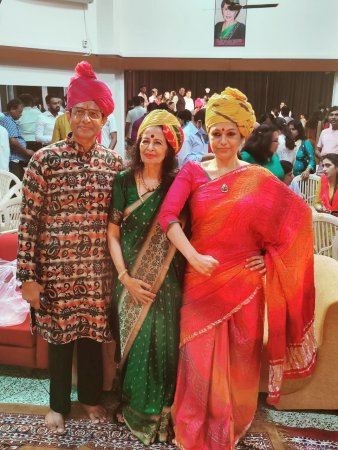 Kamesh, Saroja Vaidyanathan, Rama Vaidyanathan But how did she do this, coming, as she did, from a family where no one danced, marrying as a teenager, raising two children and spending decades setting up and packing up homes in unfamiliar places? Guruji never spoke much about her journey to me and information on this obviously powerful personality online was missing in the dry lists of honours and accomplishments. So I spoke to the Delhi-based C.V. Kamesh, Guruji's younger son and the husband of Guruji's eminent and formidable successor, the iconic Rama Vaidyanathan. Kamesh is an engineer who has had a long corporate career and started getting involved with Natyalaya work during the Covid-19 lockdown, when he retired. He gave me an inside perspective on the long road Saroja Vaidyanathan travelled from Chennai through Bihar before she became one of Delhi's most celebrated dance gurus - how she came to be in dance at all, how she took classes in the numerous uprootings and settling down of her husband's transferable government job, how the Ganesa Natyalaya started as an empty plot in a forest, and most poignantly, how Guruji was snatched away by cancer just months before the golden jubilee of her beloved Natyalaya. I also spoke to Rama about realizing the weight of the responsibility Guruji left her with and how Guruji was dancing even in the hospital, towards the end. They painted a picture of an internal life consumed by the arts and its expression sustained through decades by cheerful determination, wisdom and grace. 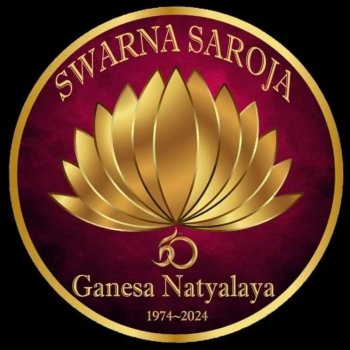 Guruji is being celebrated by Rama and Ganesa Natyalaya through a nearly year-long series of events under the name of Swarna Saroja. The first event was the Natya Kala Conference in Chennai in December 2023, which was curated by Rama, and the second, Rama's recital for the IIC's annual day in January 2024. More performances, seminars etc. are planned for the rest of the year up until a grand finale in September, the same month in which Guru Saroja Vaidyanathan came into the world as well as left it. This exploration of the great guru's life is my small contribution to #Swarna Saroja. C.V. KAMESH on his mother Saroja Vaidyanathan Family and initiation into dance She came from a very conservative family. Most South Indian families are conservative to some extent, but her parents were accomplished artistes; they were painters, and painters of a very high calibre for the day. If you went to my grandmother's house, you would actually see many paintings - of gods, of nature and other subjects - that they would actually make. So having said that, for her to have had a manifestation of an art was but logical. And second thing was that in the South, almost every house speaks of an art form, whether it's Carnatic singing or Bharatanatyam or any form of art that you would like to develop. And she was in a place as big as Chennai, which wasn't really a very rural place, and there was an opportunity very close by. But the challenge was not that. The challenge was paying the fees. When she was a child, two years old, her father had to go to the UK for studies. She was born in 1937, he left around 1938. Within a year started World War II and he was studying there till about 1940. Then, in 1940, he got drafted into the war as people who would like to volunteer. He joined the RAF, the Royal Air Force, and at that time, the family didn't know if he would come back. Nobody knew when the war would end. And when he did come back, he actually left everything and came back and didn't want to do anything with life in the corporate side, in defence, because he had seen too much of death and suffering. So when he had to take up a job, he became a university teacher, and such a person would never have enough to spend on his two daughters. Then he got a third daughter. So for him to have supported an entire family of five people - it was not possible as a teacher. At that time, the challenge was more to pay the fees. Thankfully, it was felt necessary. It was the support of her maternal grandfather. He was the one who actually said that if there is this child who wants to study, wants anything to do with education, and if you can't do it, then I'll support it. That's how it started. That was the basic challenge and after that, once she got into dance, there was very little resistance to her dancing. But as she progressed, you know how it is in society, they say, what is her life? If she continues to dance, she'll become a professional and after that, no boy will want her. So she was married to an IAS officer. My dad was from the Bihar cadre. She moved from Chennai, but she did so willingly and every place that she went, she made a mark. Teaching and legacy in Bihar 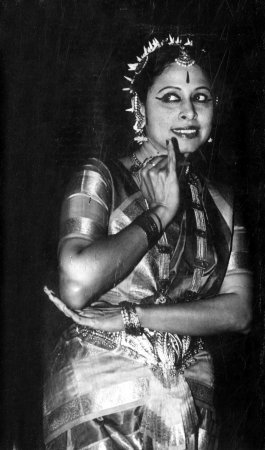 Even if she went to Patna to an entirely new family, she did everything possible to take care of the family. But wherever she went, she also ensured that she was able to follow her passion, so she took out that extra time. As I grew up, I realized that whichever place it was, she would allocate one room for dance - to teach, to practise. She started off with one or two students, gradually it became three or four, and then suddenly my father had to move to another place. Obviously, we didn't have online classes at that time. So she would start another school somewhere else. And as luck would have it, he'd be posted back to Patna and then again taken to Bhagalpur, come back to Patna and go to Ranchi, Patna again and then to Bokaro - postings used to be like this. She was able to continue a lot of these classes and she left behind a large legacy of dance in Bihar. And actually, it was with her coming that Bharatanatyam really spread in Bihar. Many people there saw that there was a lot of sincerity, a lot of style, a lot of codification in dance. Bharatanatyam seemed to them very structured, very impressive; even folk songs or a folk theme could be depicted in Bharatanatyam. So the application started spreading. And she was very good at doing dance dramas. She loved to choreograph. People were impressed each time, and the students were also getting better each time the dance drama increased in stature. I was born in 1961 when she was 24. I have an older brother who was born in 1956. We were both born in Patna and have grown up in Bihar. I did about half my schooling also there. My brother, of course, finished his entire schooling in Patna and joined the IIT in Delhi. But then, since my father was still in Bihar at that time, I was there. Finally, when we came to Delhi, I joined St. Columbia's School. My mother's teaching in Bihar spanned about eight to nine years in various parts. In 1964-65, she started teaching, when I was three or four years old and relatively capable of being independent. She waited for a while before she made it formal. Earlier it was more like, "come today if you are free." It was less about charging people than about propagating the art. But once we came back to Patna, in about '64-'65, she started teaching formally. That continued till the move to Delhi in the seventies. We had a very nice place in Patna called Bharatiya Nritya Kala Mandir - a very big hall, a very big school. It was the centre of dance in Patna. But it was nothing great then and it needed a guru to make it flower. So besides doing what she did, she also engaged in developing such places. In one of the postings in Bhagalpur where my father was the Divisional Commissioner, she arranged for a very big show where you had people like Sitara Devi perform Kathak and many other art forms; there was an overnight show of two days and after that, using the donations collected, she made a hall there. So before she left, those people said, "You have done such a great thing, so we will call it Saroja Bhavan." It's there to this day, but whether it's functional, how well it's operated, what is the condition, I don't know. But I do intend to make one trip to Bihar, to all these places where she was... It does give me a feeling that there is a destiny which is carved out and you did not do what you did unless there was a purpose behind it. So what is the purpose of setting up Saroja Bhavan in Bhagalpur if that is not being maintained? I may need to do something about it, perhaps make sure that it is again given a lease of life if required. Move to Delhi and establishment of Ganesa Natyalaya 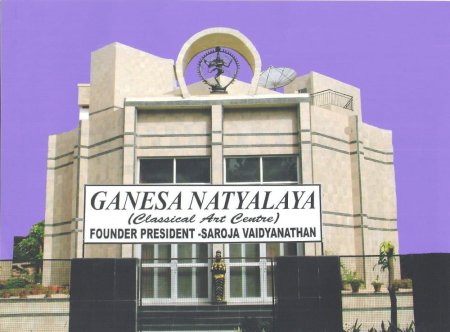 As you know, IAS officers are deputed to the Centre from the states. So in 1973, as destiny would have it, she came from Bihar to Delhi. Becoming even more professional now, she wanted to start it immediately. All officers, government officers, when they were transferred to Delhi, were made to stay in places like the Asia House or the Curzon Road apartments. These houses are very tiny places as compared to the nine-bedroom house that they were staying in when my father was Commissioner in Bhagalpur - the next posting was a literally 12 feet by 12 feet government apartment. But she leveraged it differently. There was a community centre. So very soon, within about two weeks, she put up a small notice saying 'Bharatanatyam classes'. She discussed with the people around - do you have classes here? No? That's an opportunity. And students came there and she charged them ₹10 or so per month. When word spread, she had more than 25-30 students. There was hardly any expenditure because she just had to walk down from the apartment to the community centre. Then we moved out of that place but she kept that as a centre - she continued teaching at Banjara Hall in Curzon Road Apartments, irrespective of whether it paid her or not. She would go by auto in the heat; it would be exhausting but she did it. She took up many such tough assignments which did not pay much. I think she also did some work in Yamuna apartments, the Alaknanda area... Even if it was break-even or a little loss, she would do it. 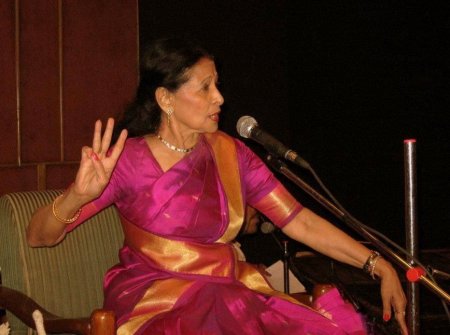 Taking class There was a lot of passion in her to do the work, not to make money out of it. Time went by, and in 1981, there arose an opportunity to buy a piece of land where we have this school, in the back of beyond, in Qutub Institutional Area. At the time, it was a forest which, I remember, had a road which was about 8 feet wide. So if two vehicles went past together, both would hit the mud. Anybody who's made a name, their life has been tough. It is only when we see the end result that we say, "I want to be like Dhirubhai Ambani." We hardly know about the kind of suffering he went through. It's easy for us to identify success, but not the effort. So when you look at a person like Saroja ji, I would say her journey was a little different, but the suffering part of it was there. You must realize that she came to Delhi, where there were already Bharatanatyam dancers. It wasn't Patna. Here, you had people like Yamini Krishnamurthi, Indrani Rahman, other dancers in other forms, like Uma Sharma... In all fields, there were doyens already there. So when a newcomer comes, either they are not given respect or not allowed entry. I'm not saying this happens every time, but I'm sure she must have faced something. It's a very natural thing that you have to work to get yourself there. Only when you do something better do you get recognized. Coming to the school, that's the time (around 1981) when the entire family put in all the money necessary to buy it. It was, I think, a very small amount by today's standards - about 20 odd lakhs. But at the time, it was so much that we had to do everything possible to get that money. Immediately, we wanted to start building it. Lots of people said, "Look, you can want to build it, but you will be the only one there." There was no infrastructure because infrastructure comes with settlements. For example, there was only one power line. If it were to be cut, there would be no way power would be restored for another 24 to 48 hours. Ours was the only place there, but nevertheless, the feeling was there that we should be able to make it work. So in 1981-82, we started digging... and we found snakes, jackals, peacocks, neelgai. The neelgai is not very friendly. So when we saw that, we got scared. There were no streetlamps. There were enough number of challenges, and one wondered why we were doing it. How many people would send their kids there? But my parents went ahead. By 1987-88, the building was ready. 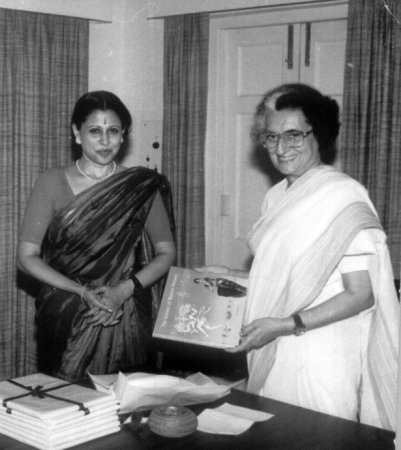 With then Prime Minister Indira Gandhi The land itself was inaugurated by Jagmohan ji, the lieutenant governor, and in '87-'88, S.D. Sharma ji, the President, inaugurated the building. We had to start our own bus service. We hired a small bus to pick up the students, let's say from Curzon Road Apartments, to bring them there, like a school bus, otherwise nobody would be able to come. Today, it's the centre of the city; but at the time people looked at us like we were lunatics. Life took us from one step to the other. There was no giving up and nothing like stepping back. In 1979, when we got the proposal for the land, we didn't want to pick it up because it was way beyond the city. That's the year that I got into IIT Delhi, and somehow, my mother found it a good reason to meet up (Qutub Institutional Area, where Ganesa Natyalaya is located, is very close to IIT Delhi). But they never came for me! Handling family and finances along with dance Dance didn't pay then and it doesn't pay now. At least in Delhi it doesn't. I'm not sure about the other places where you have audiences who pay for tickets. There is a cash box collection that always happens, but here there's nothing called a cash box collection. If you're lucky, you make ends meet. My father was earning, there was the little fee that she got and the contribution from the organizer. That kind of made things comfortable. There was never any looking at it as a business proposition, which even today it isn't. But there was nothing stopping her. So that's the economics part of it. If a woman is happy, she keeps the family happy in some way or the other. But if she is unhappy, you can find even the brightest of rooms falling apart. It was just that she was allowed to do what she wanted. There may have been constraints here and there - like maybe no performances in hotels ... today, it's a very natural thing. Those days it wasn't the trend, so maybe there were some restrictions which she put on herself or maybe my father may have asked. In the meantime, what also happened was that she had a few cousins overseas, so she leveraged her contacts there. On her own initiative, she took an orchestra, went to UK and performed. I don't know whether it was even balanced financially. But she did it, and repeatedly. She went to the US also. Soon, she was also part of the ICCR and was getting opportunities from them to travel. They are a little more liberal than the rest of the organizers and that would then help the year go by. As for the school, the annual days, for example, were when some of the students would bring in donations, so that would also help. Donations would largely go for costumes, hall booking, practice and musicians. I don't think she ever felt disappointed that she had two sons and no daughters, because eventually she had about 100 daughters, so she never really missed it. And she made sure that I considered all of them as my sisters! My brother learnt sitar for about 8 years in Bihar. After that, of course, he got into IIT and then... one part of the sitar became a flowerpot. The nature of the place - it is just so much into studies that there was no bandwidth to do anything else. As for me, I learnt tabla because he learnt sitar, though that was not for too long - 4 to 5 years. But then I had to call it a day because I had to get into the IIT. Mine couldn't be made into a flowerpot so I hung it in the house! 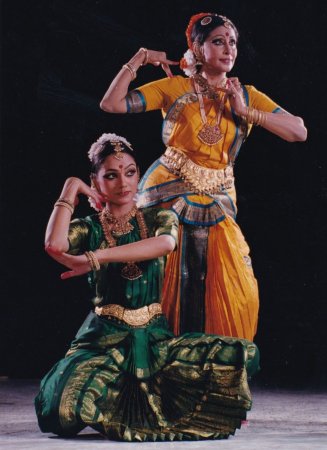 Saroja & Rama Vaidyanathan As to dance (why he and his brother never learnt dance, as many gurus' own children do) - you see, dance has two aspects to it. One is performing, and I don't think I was a good performer, I have two left feet. But the sense of beat and the music were interesting. For example, even now, as I'm recapping, it's like... (belts out Carnatic bols). So I'm able to recite sections of jathis very easily because I grew up hearing them over and over again. If someone was out of beat (during class and I heard it), it would disturb my studies. My focus would be disturbed (laughs). I'm just saying that to that extent, yes, I learnt a little more than my brother did. But one thing I will tell you is that many of these aspects we possibly absorb and it gets into our genes, it gets into our psyche. It needs a proper time and place to come out. I would not say that I don't know it. Maybe if I devoted time, I could. I then got married to Rama, and that was again a big turning point. Everybody else was a sister. I had to hunt outside (laughs)! Rama, lineage and Natyalaya 2.0 We have an annual festival in IIT - that is the only time we get as a window to chill. I met her there and our friendship grew. We got married in 1987. So it's her destiny which brought her to an environment of dance after marriage. She had learnt Bharatanatyam from Yamini Krishnamurthi, you take 10 steps down and you're in the dancing hall - that's a big shift. And then we were blessed with Dakshina. Dakshina was even more gifted that way. She was born there, so for her, Natyalaya is home. She grew up there. My other daughter, Sannidhi, is also similarly blessed and is a mridangist. She accompanies Rama. 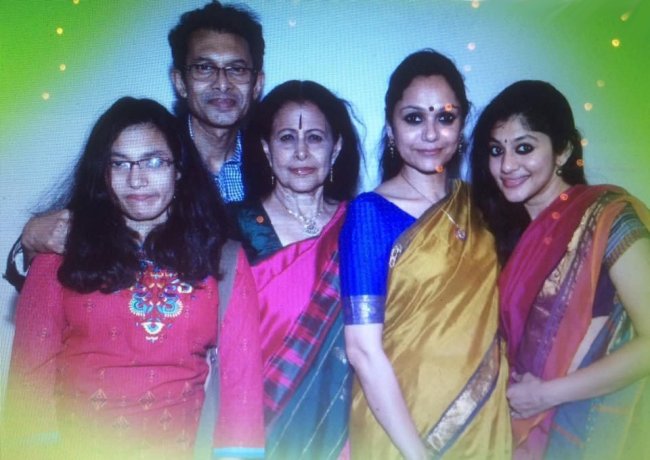 Sannidhi, Kamesh, Saroja, Rama and Dakshina I retired at around the same time that the Covid-19 lockdowns started. I gradually started taking care of the Natyalaya's administration. I'm just cutting across to that stage - my mother and I would spend a lot of time discussing Ganesa Natyalaya 2.0. Natyalaya 1.0 was what she and Rama did - largely my mother, I would say. But I had to be there to create that 2.0 because Covid caused a major shift. The students couldn't be with us. We needed to impart education, to have some kind of a semblance of existence. And we needed to create that digital platform and gradually, with the digital platform, came online classes, exchanging music for people to practise on their own, sending videos, analyses, comparatives, clips, reels and those things. In parallel, I realized that we had close to 40 years of footage. They're all analog. That needed to be made digital. Plus, they needed to be made sharper. Whatever was taken at that time was not all that great in terms of photography. Today, the technology is different. We realised it had to be digitized to bring about an understanding of it, maybe rehash it. I didn't have the dance intellect for it, but the technology, I could do that. She had the intellect of re-choreographing it in a different way. So the Covid time was spent very constructively in discussing such things. How do we automate things? How do we make it visually more impactful? Can we let out the Natyalaya hall to people who can't afford other venues? Habitat Centre is about a lakh. Kamani is about 1.5 lakh. India International Centre is Rs.60,000-70,000. Triveni is about as much. Where does a person go? And do you think art pays that much? The answer is zero. There are times that you do it for free. So we were discussing that - can we make this better? But for better means, we need money. All these things are an investment of at least 10 to 14 lakhs - new systems, new AC, new lights, generator. Everything that is offered there has to be offered here. As for the capacity - if other halls are, let's say, about 300 capacity, we can offer 150. To that extent, it's small but there's opportunity and platform. So this kind of time Covid-19 gave us between our card sessions. She used to love playing cards. Saroja Vaidyanathan's son on her philosophy - Part 2 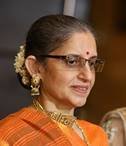 Shveta Arora is a dance-mad writer who chronicles classical dance events in Delhi (and also those online). In 2009, she started the blog Kala Upasana at delhiculturecomment.blogspot.com, where she began posting her own writing along with photographs clicked by Anoop Arora, her husband. She's been dancing all her life as a devotee, but resumed her formal training in Kathak in her 50s and has passed her fifth year Kathak exams. Post your comments Please provide your name and email id when you use the Anonymous / blog profiles to post a comment. All appropriate comments posted with name and email id in the blog will be featured in the site. |